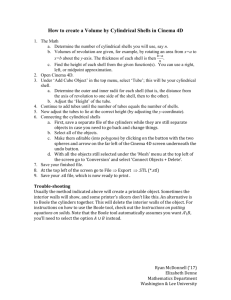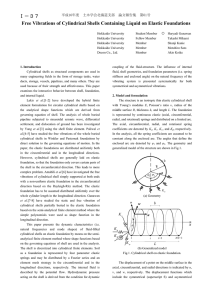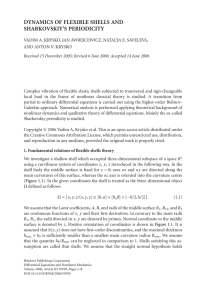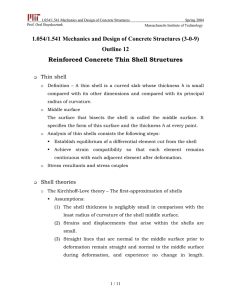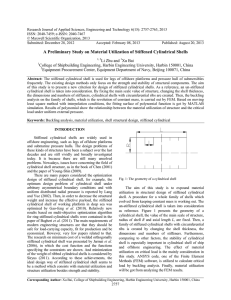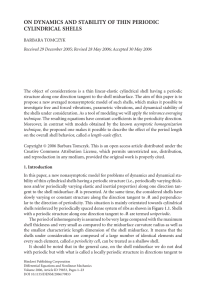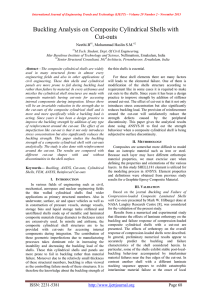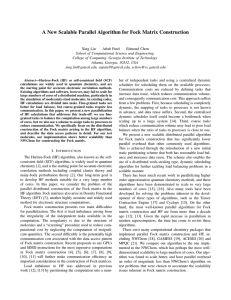TEX document #6 page 1 I ρ
advertisement
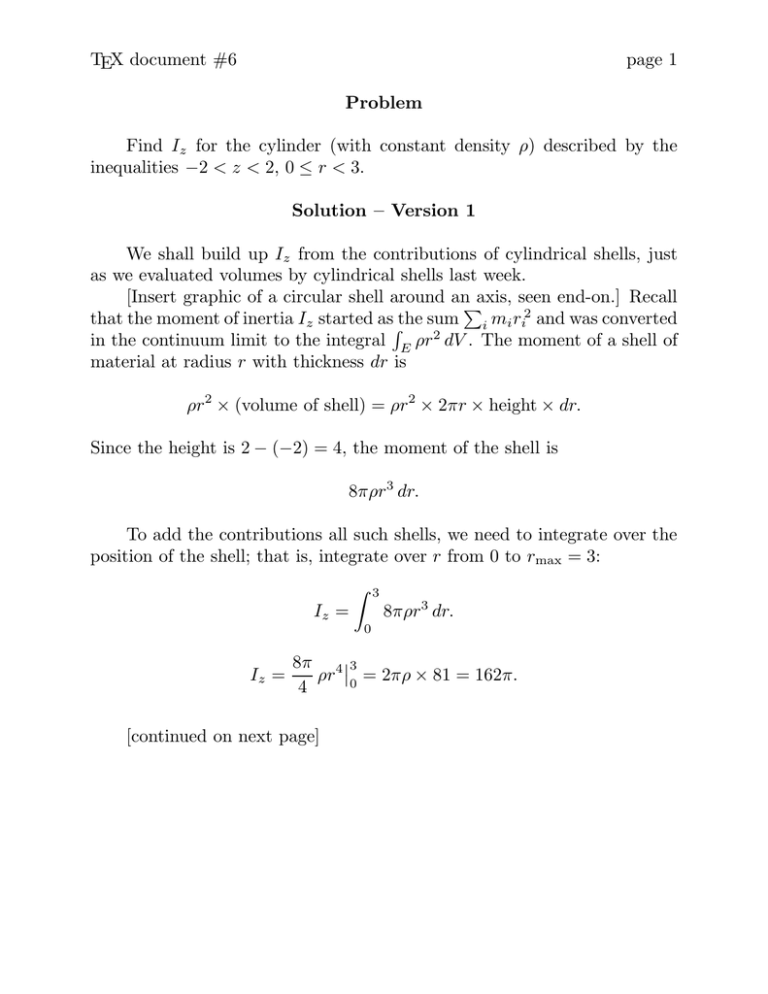
TEX document #6 page 1 Problem Find Iz for the cylinder (with constant density ρ) described by the inequalities −2 < z < 2, 0 ≤ r < 3. Solution – Version 1 We shall build up Iz from the contributions of cylindrical shells, just as we evaluated volumes by cylindrical shells last week. [Insert graphic of a circular shell around anPaxis, seen end-on.] Recall that the moment of inertia Iz started asRthe sum i mi ri2 and was converted in the continuum limit to the integral E ρr2 dV . The moment of a shell of material at radius r with thickness dr is ρr2 × (volume of shell) = ρr2 × 2πr × height × dr. Since the height is 2 − (−2) = 4, the moment of the shell is 8πρr3 dr. To add the contributions all such shells, we need to integrate over the position of the shell; that is, integrate over r from 0 to rmax = 3: Z 3 8πρr3 dr. Iz = 0 Iz = 8π 4 3 ρr 0 = 2πρ × 81 = 162π. 4 [continued on next page] TEX document #6 page 2 Solution – Version 2 Integrals over regions in the plane can be evaluated in polar coordinates, not just rectangular ones. We just need to extend our geometrical understanding of the area of a ring (cross section of a cylindrical shell) to a small piece of the ring. The physical area of a very small polar-coordinate region with side sizes ∆r and ∆θ is ∆r × (r ∆θ), because the length of the arc with angle θ is proportional to r. [Insert graphic of the conventional half-eaten piece of pie.] Therefore, the “differential element of area” transforms according to the formula dx dy = r dr dθ. (∗) (See Sec. 13.4 for details.) Thus in our example problem Z Iz = Z 2 Z 3 dz r dθ (ρr2 ). dr −2 0 2π 0 (It is understood that the integrand function is inside all the integrals. We write the differentials immediately after the respective integral signs just to make clear which is which.) Since the integrand does not depend on z or θ, the integrals over those variables can be done instantly: Z Z 3 Iz = 4 × (2π) 3 3 r3 dr. ρr dr = 8πρ 0 0 And this is the same integral we already evaluated when using the other method. Whenever the body is radially symmetric and the density function is also radially symmetric (i.e., it may depend on r and z but not on θ), the θ integration is trivial to perform and the use of equation (∗) yields the same result as a cylindrical-shell argument. The importance of (∗) is that it also applies when ρ depends upon θ, and even when the boundary of the region depends on θ (a boundary curve of the form r = f (θ)).
